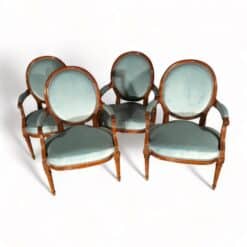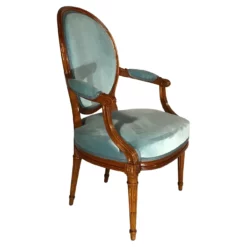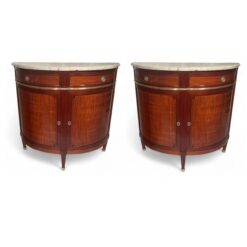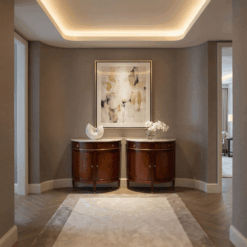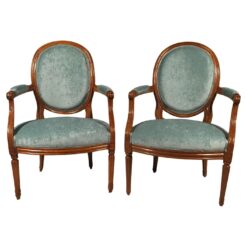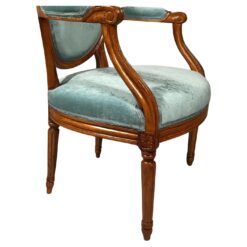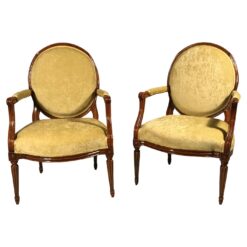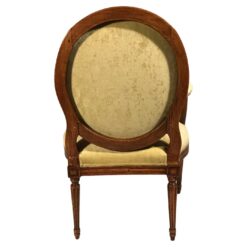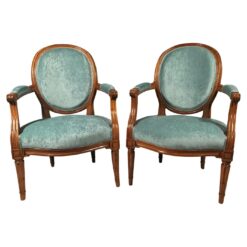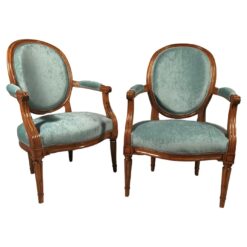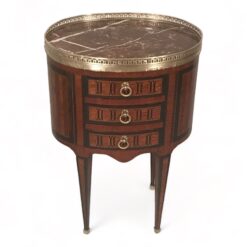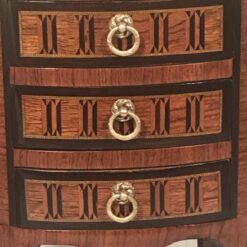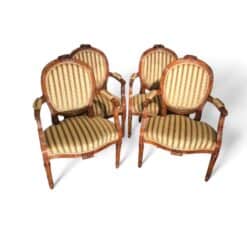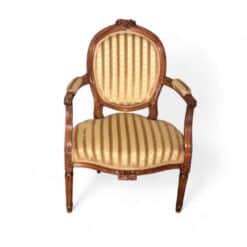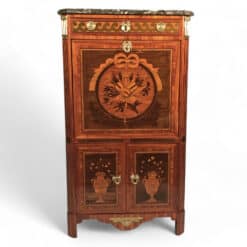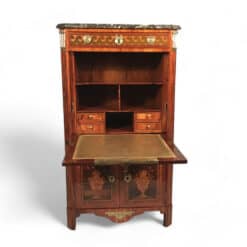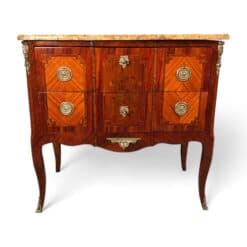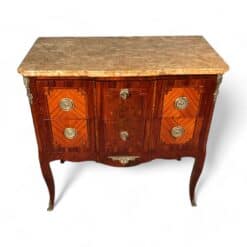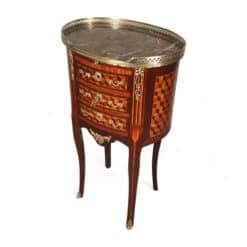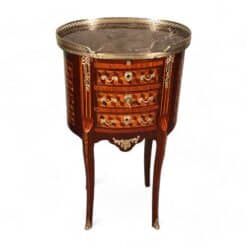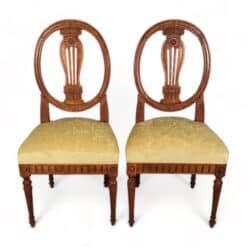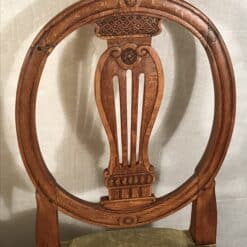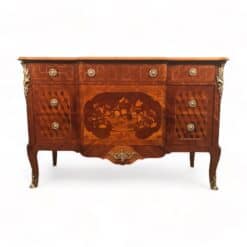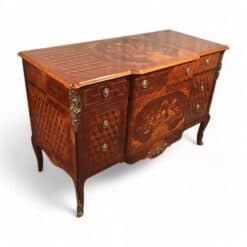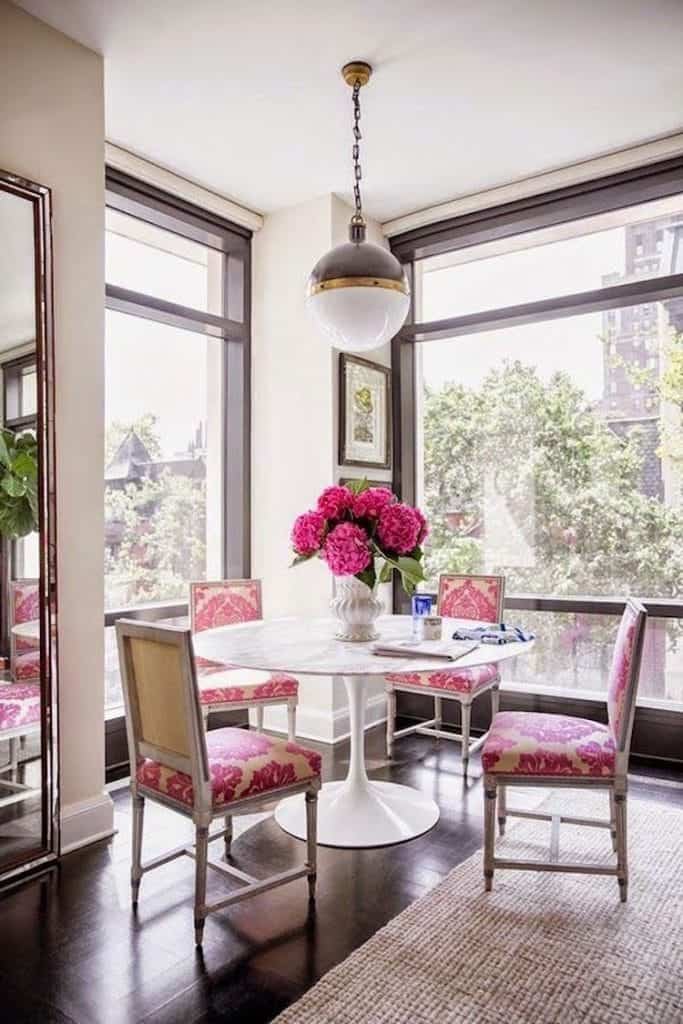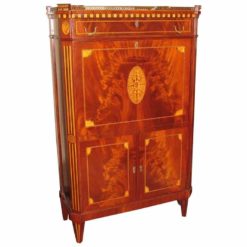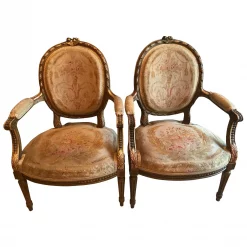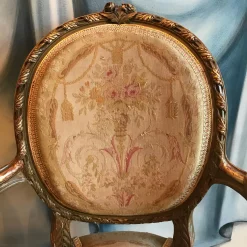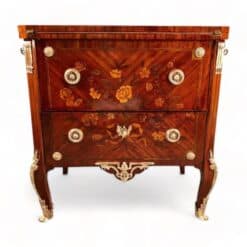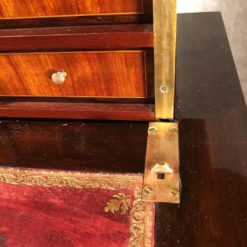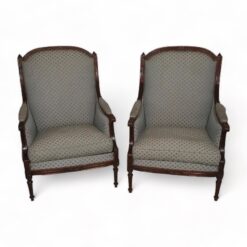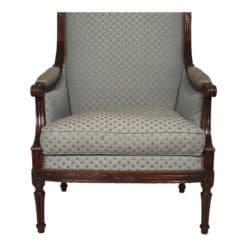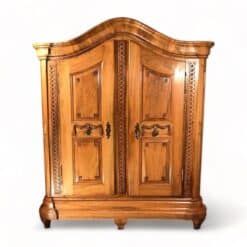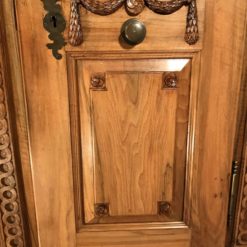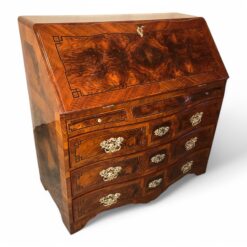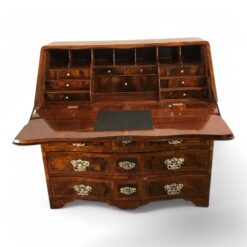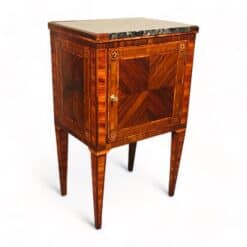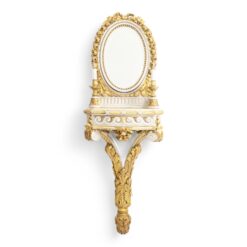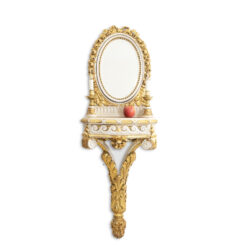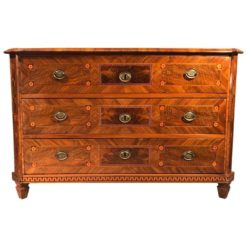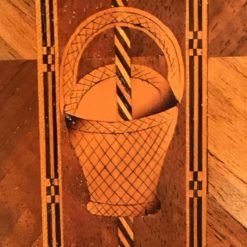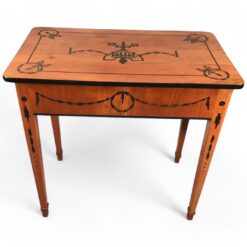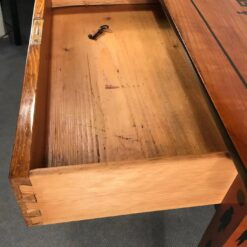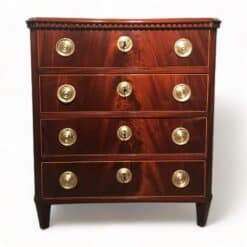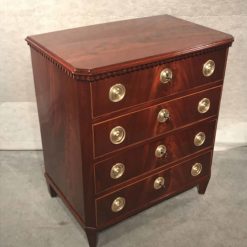Best Sellers
Styylish History
History Of Louis XVI Antique Furniture
Louis XVI Furniture History
From 1760 to 1790, the graceful curves of Rococo faded out of fashion, and Louis XVI style took its place.
This is new style emerged during the reign of King Louis-Auguste (1774-1793). Like its Baroque predecessor, it focused on straight lines and included motifs inspired by the classical age.
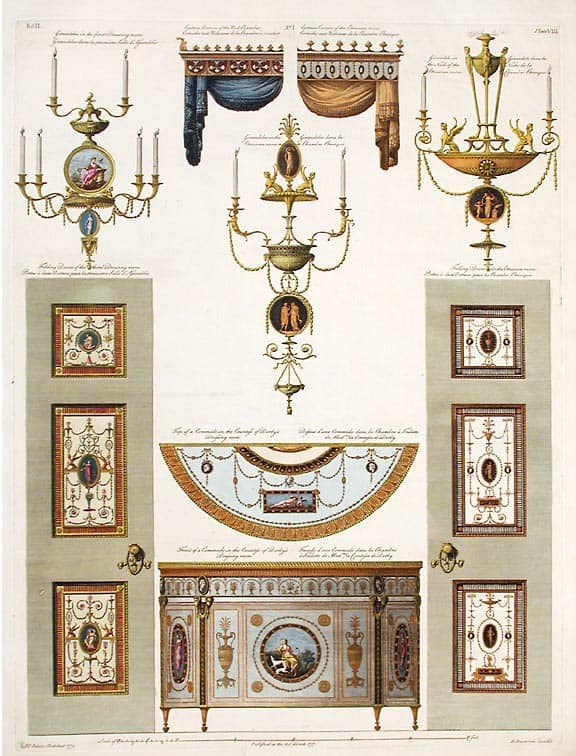
While Louis XVI evolved into a more refined version of Louis XV style, it was less substantial than the Louis XIV design.
It is the last stage of the baroque style and the beginning of French neoclassicism.
Although this period only lasted 30 years, the characteristics of Louis XVI continued well into the Empire period at the beginning of the 19th century.
Louis XVI design, also called Louis Seize, is one of the most notable and widely emulated styles for both furniture and interior design.
It is known for following English Neoclassical principals, which was a coinciding style at the time. Both called for a return to the ideals and aesthetics of Classical Antiquity.
Louis XVI style emerged as excavations in Pompeii and Herculaneum uncovered paintings, sculptures, and architecture.
It took further inspiration from values inspired by Jean-Jaques Rousseau, whose Enlightenment philosophies called for a return to nature.
Rousseau’s romanticized version of nature was something that, despite its wildness, maintained order. The furniture of this time reflects this in its subdued opulence.
His wife, Marie Antoinette, was a strong advocate for the style of the Louis XVI period. She often commissioned artists and craftsmen with the task of decorating and furnishing her numerous rooms in Versailles, Saint-Cloud, Petit Trianon, and Grand Trianon in the style of Louis XVI.
The French Revolution & Louis XVI Furniture
From 1789 to 1799, the French Revolution caused chaos and upheaval for citizens of every class.
The wealthy bourgeoisie, aristocrats, noblemen, and royals were forced to forfeit their possessions.
This relinquishment, totaling in the hundreds of millions of dollars, dispersed furniture, paintings, and more across the art market in France and beyond.
Items saved from destruction now are preserved in museums and galleries across the world.
The elegance and beauty of these one-of-a-kind pieces now are admired in places like the Louvre, Metropolitan Museum of Art, and the Wallace Collection.
In the decades after the revolution, items from this period of history gained an intense appreciation among other wealthy individuals and collectors. In fact, the second half of the 1800s saw a surge in commissioned replicas for private collections.
After the war, the transition to the more straightforward and modest Directoire style began.
Neo-Classicism in Germany: Zopfstil
“Zopfstil,” a German word for the Neo-classical style that started around 1770, is a contemporary of Louis XVI style.
Zopfstil means “pig-tail style,” which alluded to the ancien régime. In the early parts of this phase, traditional furniture was still produced, though with more modern decoration.
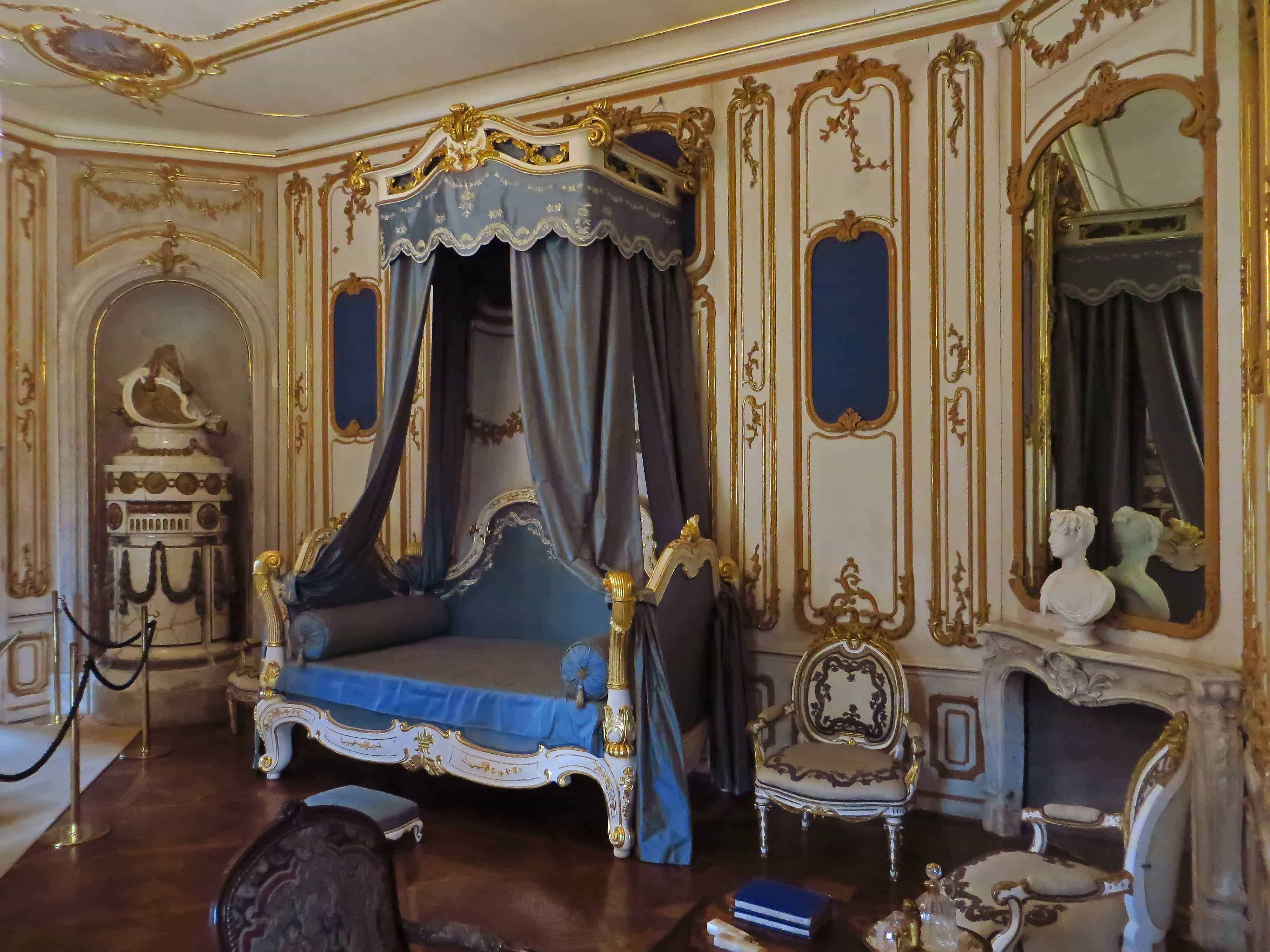
For example, in secrétaires, quadratic, architectural design replaced the flowing, curving forms of the Rococo period.
Also, new marquetry practices restricted it to the center of the drawer, door panel, or fall-front, rather than covering a larger space.
David Roentgen, a prolific cabinetmaker during this time, introduced ornaments like festoons, floral bands, paterae vases, metopes, and triglyphs.
By the end of the century, the norm was a simple, streamlined design.
The writing cabinet or secrétaire gradually fell out of favor for a popular Zopfstil furniture design: the roll-top desk, which originated in France.
Zopfstil and Louis XVI also saw prominence in other countries across Europe, although under different names. In Sweden, it is the Gustavian style, in Austria, it is the Josephinian style, and in England, it is the late Georgian style.
Characteristics of Louis XVI Furniture
Unlike the earlier Rococo and Louis XV styles, Louis XVI is more conservative, though no less opulent. For example, mahogany was a favorite veneer as well as a construction material.
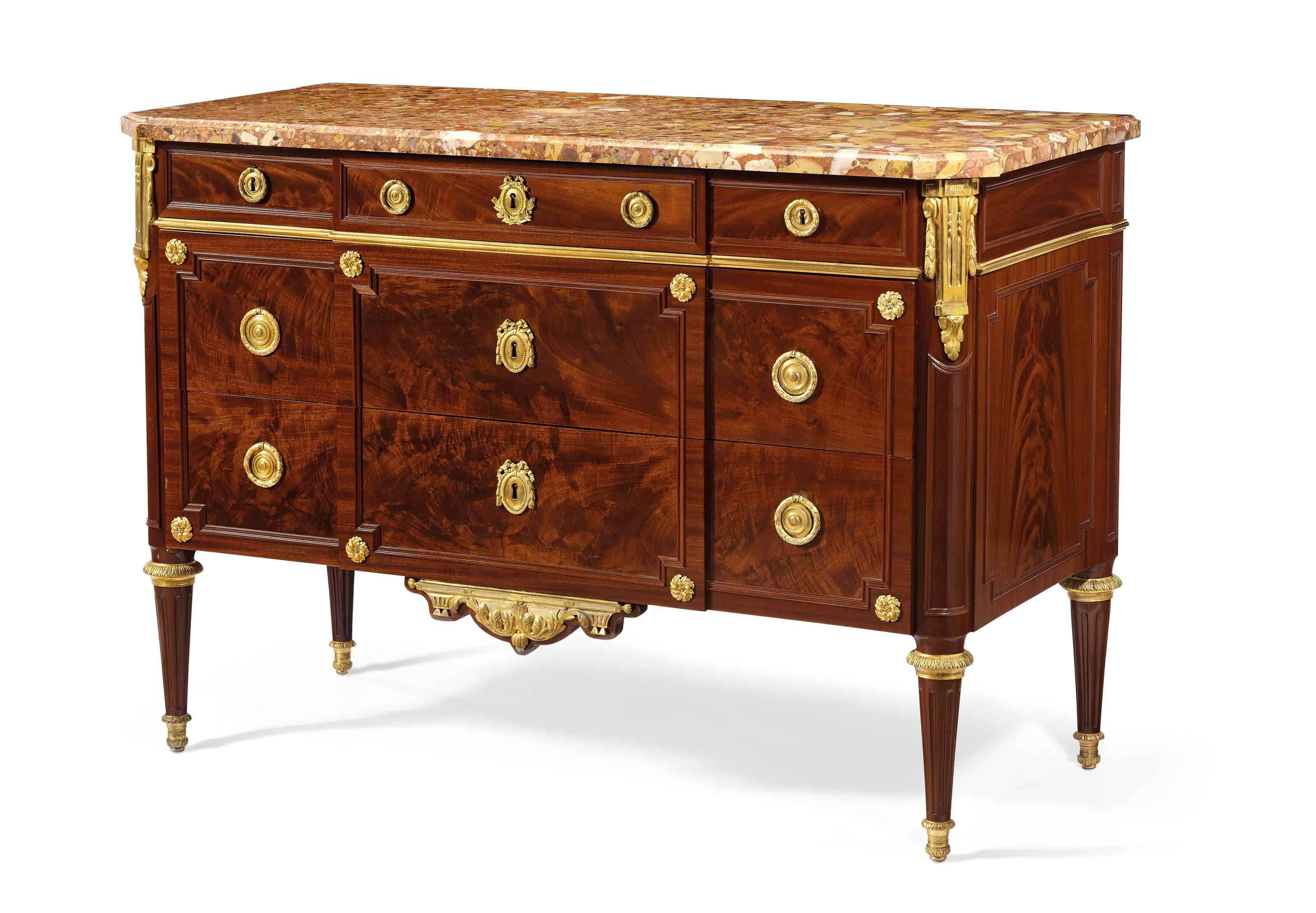
The pieces have less floral marquetry but have no shortage of gilded surfaces. Furniture typically emphasizes solid veneers of wood bordered by linear gilt bronze mounts inspired by classical antiquity.
Vertical fluting and grooving accentuated consecutive lines, which mirrored the desire for more architectural designs in furniture.
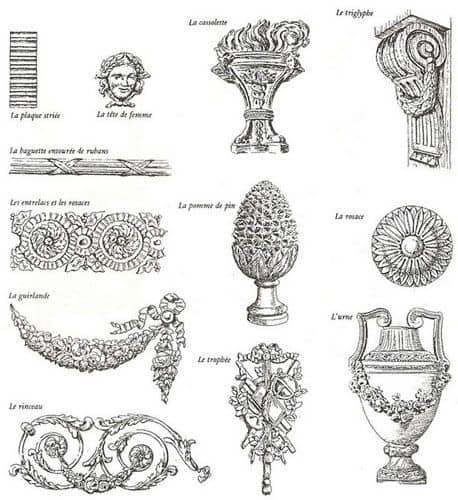
Despite the formality of this new style, ribbons and leaves reminiscent of the whimsy of Louis XIV emerged.
They combined with motifs representative of classical antiquity, such as:
- Oak and olive leaves
- Interwoven flowers, ribbons, or vines
- Crowns of roses
- Flaming torches
- Horns of plenty
- Vases sprouting flora and vines
A new style, cone finials, also became frequent additions to Louis XVI pieces. Sometimes, artisans painted furniture adorned with Sevres porcelain, though not always.
The Garde-Meuble du Roi, the royal furniture workshop, saw the production of most royal furniture at this time.
Early Louis XVI centered around large, grand rooms, similar to Louis XIV. However, towards the end of the king’s reign, a shift towards salons and more intimate spaces occurred.
Later, Louis XVI style also saw attractive decorations involving mythological creatures, like sphynxes and griffons.
This growing preference for exotic elements expanded to include Chinese, Arabesque, and Etruscan forms.
Specialized pieces were also common. Examples include lightweight chairs for sitting at gambling tables, boudoirs, dressing rooms, libraries, and foyers.
Materials
The Louis XVI period is considered the golden age of cabinetmaking. Desks and cabinets found a purpose at many royal residences, including the Palace of Versailles.
Craftsmen employed inlays of high-quality woods, primarily mahogany, and then was finished with gilded bronze and mother-of-pearl.
Marquetry, made with satinwood, kingwood, or rosewood, to name a few, followed the love for geometric forms as well.
Mother-of-pearl was popular for creating patterns like the checkerboard, cubes, or even more complicated designs.
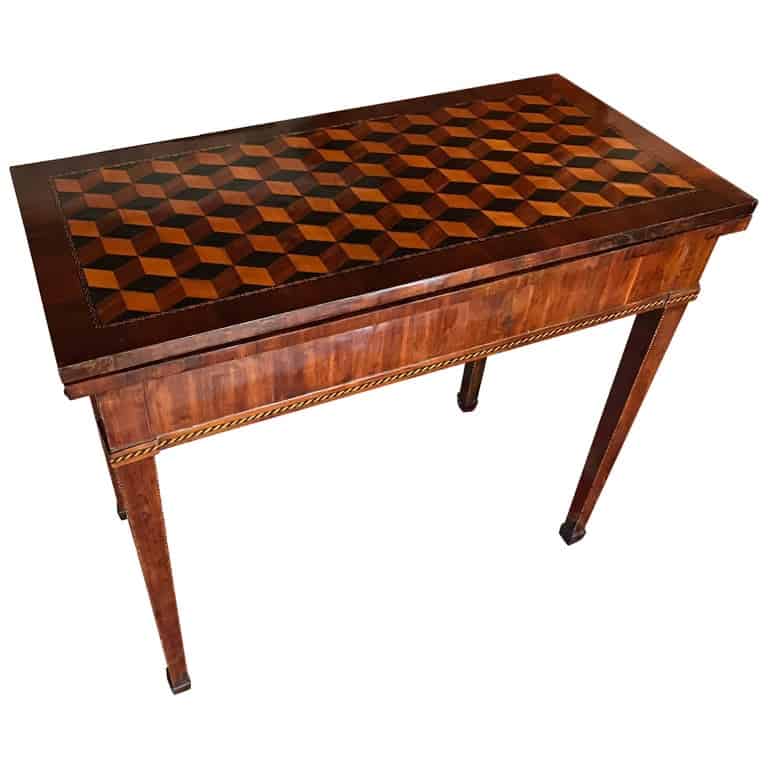
The dark richness of mahogany was the perfect background for bronze ornaments and fittings, which stood out beautifully.
Commodes
Louis XVI commodes set themselves apart from other styles because of its decorative cohesion. Artisans decorated commode faces as a single unit and hidden drawers.
Ring handles were standard, but variations could include wreaths encompassing a rosette-shaped backplate.
This period saw new types of furniture, such as a half-moon shaped commode and the commode dessert, a piece with a front door and shelves on the side.
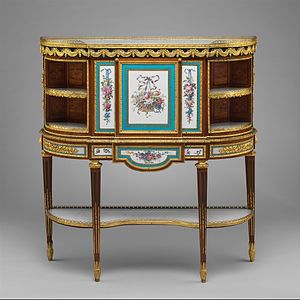
Source:Metropolitan Museum of Art NYC
Some models featured a mirror covering the back panel.
A love for geometric forms influenced the creation of another new model: the oval-shaped commode.
The commode bonheur-du-jour was a dressing table meant for boudoirs. A small armoire sat atop it with a mirror or a curtain.
Despite innovations and novelties in newer commodes, the older two- and three-drawer models remained widely used.
Innovations in Louis XVI Designs
Small mechanical features like the one seen in the table a la Tronchin added to the allure of Louis XVI furniture. This piece included a built-in shelf for reading that could lower or raise.
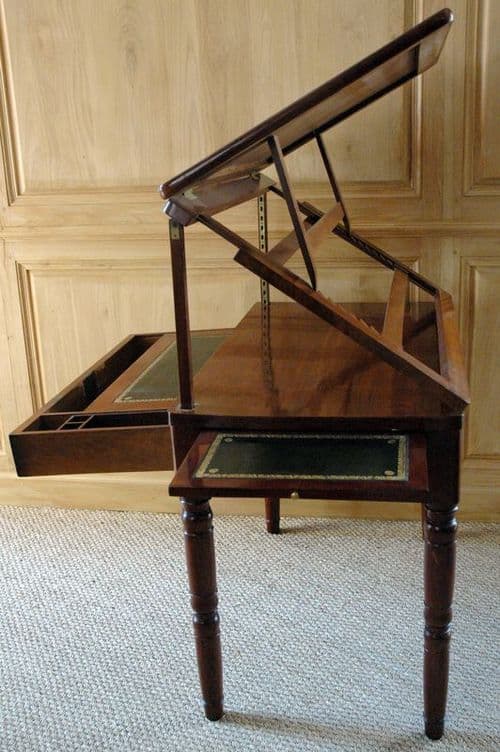
Armoires at buffet or sideboards made of carved walnut and oak were fashioned for the “Garde-robe” (entry hall). In dining rooms, they displayed porcelain and glass.
Production of these sideboards continued in the provincial parts of the country throughout the 19th century.
A key feature during this time is an abundance of athéniennes, cassolettes, brûle-parfum, guéridons, and jardinières.
Like most pieces from this period, desks and tables were meant to be lightweight and easy to move around a room, like a table bouillotte, a small four-legged piece with drawers.
Writing tables primarily remained the same as their predecessors, while incorporating the motifs and geometry of the new style.
But, this period did see the creation of le secretaire a abattant, or the fall top desk.
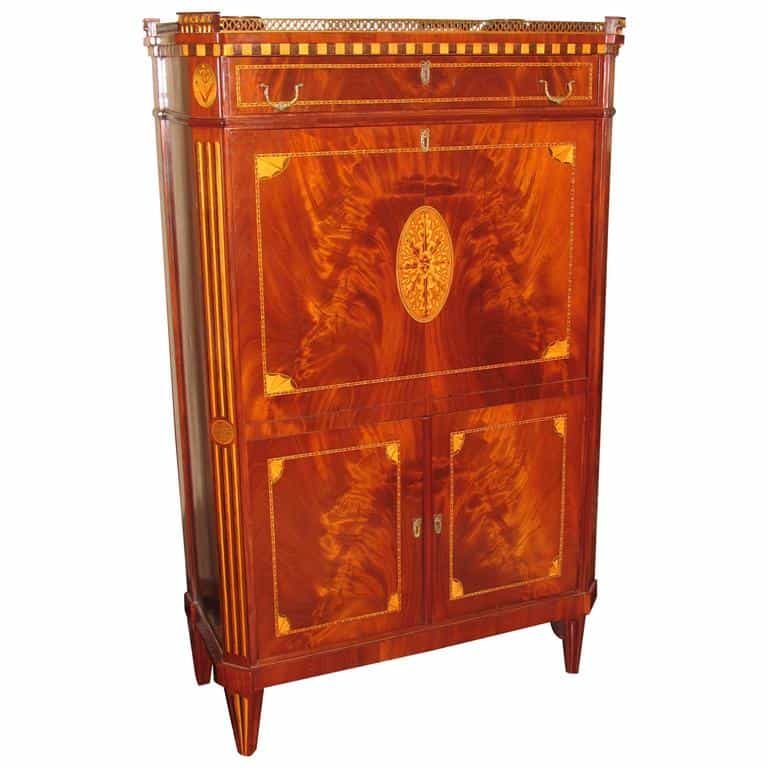
Another model, the cylinder desk, was also a fashionable piece.
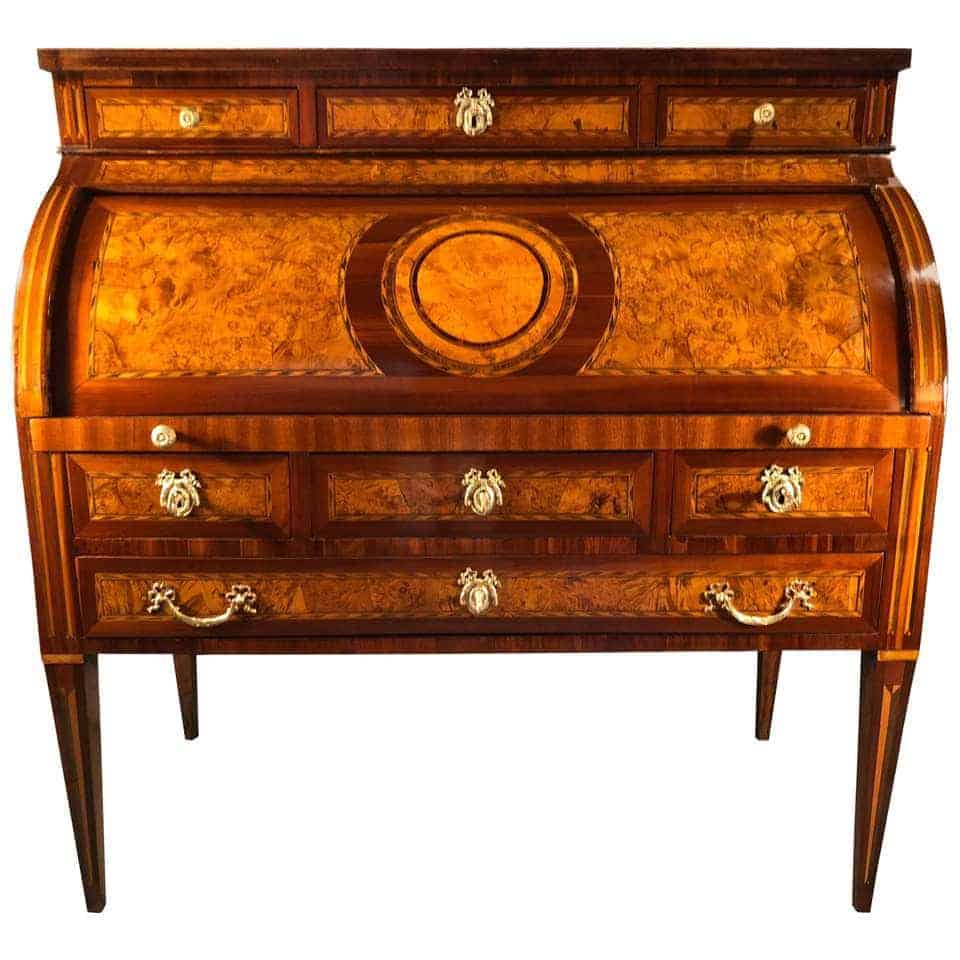
Chairs
Although Louis XVI chair models are mostly the same as Louis XV, there were notable changes in the decorative aspects.
Louis XVI chairs are easy to spot because of their predominating classicism elements. These include column-like legs, perpendicular lines, and geometric appearance.
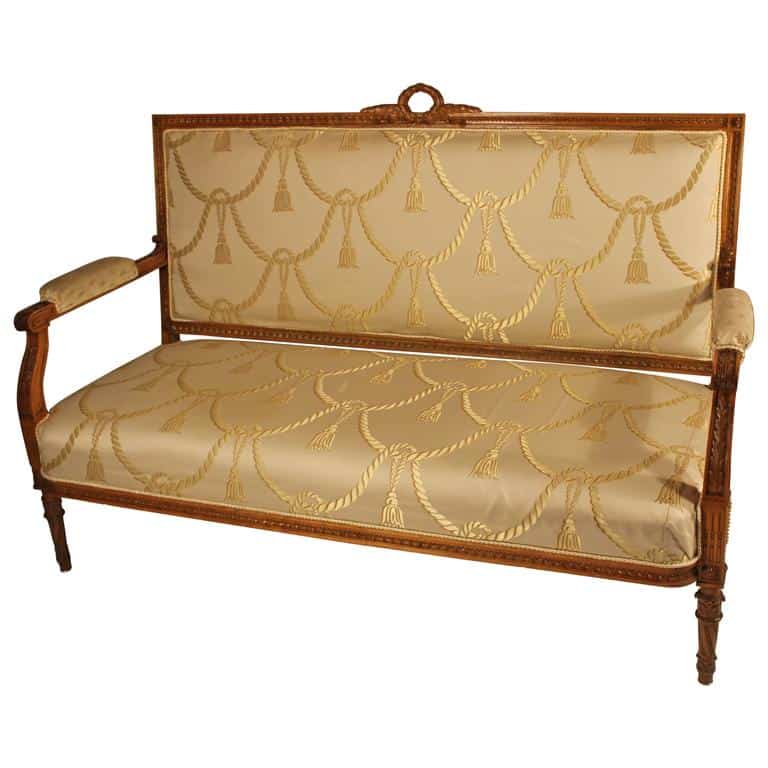
Chairbacks always were upholstered and generally were either round, shield-shaped, or rectangular and featured lyre motifs.
Hand-stitched silk upholstery also displayed classic designs. Damask and tapestry with pastel pallets were also common materials.
Giltwood chairs and settees played equally important parts as decorative and functional objects for interiors of this time.
Hand-carved frames made from fruitwood, beech, walnut, and sometimes combined with gesso.
Armrests extended to the chair’s edge, delicately ending in the shape of a scroll.
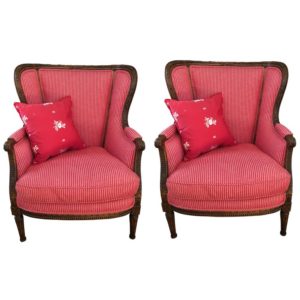
Frequent themes in decor included flora, foliates, garlands, and classical forms and compositions.
Chairs and other seating belonged either next to the walls or in the middle of the room. Often, they paired with side tables as a way of encouraging intimate conversation spaces.
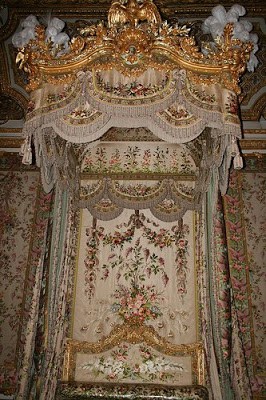
Beds
The beds made during the Louis XVI period are some of the largest ever built, particularly those created for the royal ceremonial bedrooms.
A balustrade usually divided the bed from the rest of the room. An elegant canopy hung over the top of it.
A gilded, hand-carved wooden frame held up the richly embroidered silken canopy. To prevent its collapse, the heavy frames in Marie Antoinette’s room at Fontainebleau required two extra support columns.
Notable Names In Louis XVI Design
There were several craftsmen of this time whose skills made them masters of their craft.
Some of these men included ébénistes like Jean-Henri Riesener, Martin Carlin, and Adam Weisweiler.
Of course, menuisiers, or those who carved chairs and tables, also made lasting contributions to Louis XVI furniture. The most famous was Georges Jacob, whose career spanned nearly five decades.
Many consider Reisener (1734-1806) as the most exceptional furniture maker of his time. The king granted him royal patronage in 1771, and he worked until 1784.
Reisener’s natural talent for design and precision produced uncommonly indulgent and luxurious furniture.
He often used exotic, luxurious materials in his marquetry and ornamentation. These included Japanese lacquer with gilt, mother-of-pearl, and richly gilded ormolu mounts.
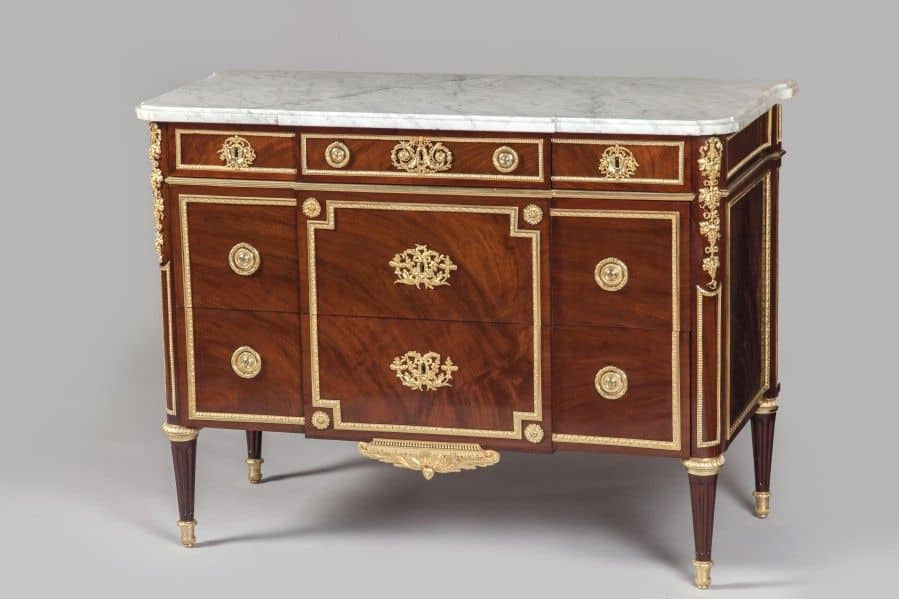
Weisweiler’s (1744-1820) designs are his lasting legacy. He also frequently used intermediaries to sell his pieces, including merchants, Daguerre, and Riesner.
Weisweiler’s most significant contribution to the Louis XVI style was his trademarked-interlaced stretcher.
Conclusion
The craftsmen who made Louis XVI style pieces valued the beauty they saw in objects from the past, just like antiques in the modern era.
The geometric forms and classic beauty of this period continue to remain a favorite among collectors and antique enthusiasts alike.

